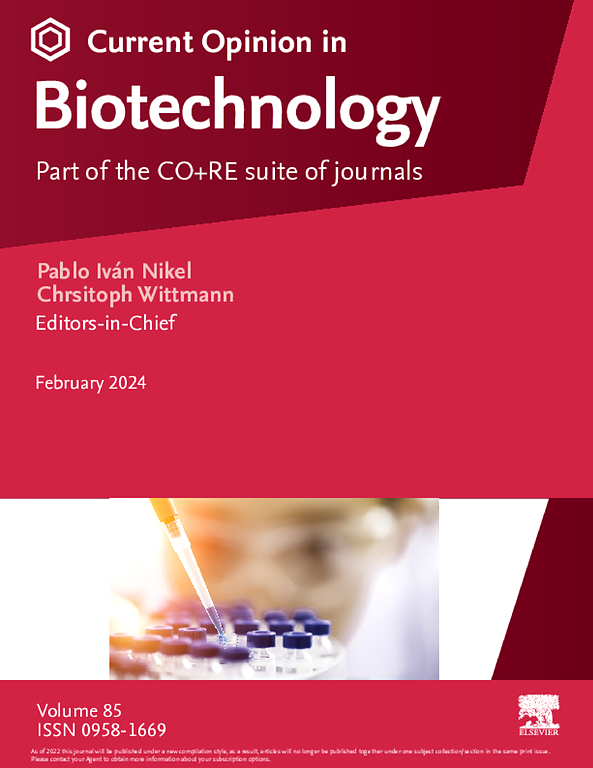人造肉基因组尺度代谢模型:进展、挑战和未来方向
IF 7.1
2区 工程技术
Q1 BIOCHEMICAL RESEARCH METHODS
引用次数: 0
摘要
人造肉是一个新兴领域,它整合了干细胞生物学、组织工程和生物加工,以创造一种可持续的替代传统肉类。然而,它的广泛采用面临着关键的代谢挑战,包括对无血清培养基的需求,细胞系特异性生长条件的优化,以及增强的细胞工程策略。基因组尺度代谢模型(GEMs)已经在优化中国仓鼠卵巢代谢条件方面发挥了重要作用,它们可以以同样的方式用于养殖肉类。这些模型促进了向成本效益高、无血清培养基的过渡,并通过代谢通量分析提高了生物质产量。未来的进展将需要扩大公开可用的代谢数据集,完善细胞系特异性模型,并整合转录组学和蛋白质组学数据,以提高预测的准确性。通过利用GEMs,养殖肉类生产可以克服目前的限制,为传统肉类的可扩展、可持续和经济上可行的替代品铺平道路。本文章由计算机程序翻译,如有差异,请以英文原文为准。
Genome-scale metabolic models in cultivated meat: advances, challenges, and future directions
Cultivated meat is an emerging field that integrates stem cell biology, tissue engineering, and bioprocessing to create a sustainable alternative to conventional meat. However, its widespread adoption faces key metabolic challenges, including the need for serum-free media, optimization of cell line–specific growth conditions, and enhanced cellular engineering strategies. GEnome-scale Metabolic models (GEMs) have been instrumental in optimizing metabolic conditions for Chinese hamster ovaries, a powerhouse species for biomanufacturing, and they can be adapted to be used for cultivated meat in the same way. These models facilitate the transition to cost-effective, serum-free media and improve biomass production through metabolic flux analysis. Future advancements will require expanding publicly available metabolic data sets, refining cell line–specific models, and integrating transcriptomic and proteomic data to enhance predictive accuracy. By leveraging GEMs, cultivated meat production can overcome current limitations, paving the way for a scalable, sustainable, and economically viable alternative to traditional meat.
求助全文
通过发布文献求助,成功后即可免费获取论文全文。
去求助
来源期刊

Current opinion in biotechnology
工程技术-生化研究方法
CiteScore
16.20
自引率
2.60%
发文量
226
审稿时长
4-8 weeks
期刊介绍:
Current Opinion in Biotechnology (COBIOT) is renowned for publishing authoritative, comprehensive, and systematic reviews. By offering clear and readable syntheses of current advances in biotechnology, COBIOT assists specialists in staying updated on the latest developments in the field. Expert authors annotate the most noteworthy papers from the vast array of information available today, providing readers with valuable insights and saving them time.
As part of the Current Opinion and Research (CO+RE) suite of journals, COBIOT is accompanied by the open-access primary research journal, Current Research in Biotechnology (CRBIOT). Leveraging the editorial excellence, high impact, and global reach of the Current Opinion legacy, CO+RE journals ensure they are widely read resources integral to scientists' workflows.
COBIOT is organized into themed sections, each reviewed once a year. These themes cover various areas of biotechnology, including analytical biotechnology, plant biotechnology, food biotechnology, energy biotechnology, environmental biotechnology, systems biology, nanobiotechnology, tissue, cell, and pathway engineering, chemical biotechnology, and pharmaceutical biotechnology.
 求助内容:
求助内容: 应助结果提醒方式:
应助结果提醒方式:


